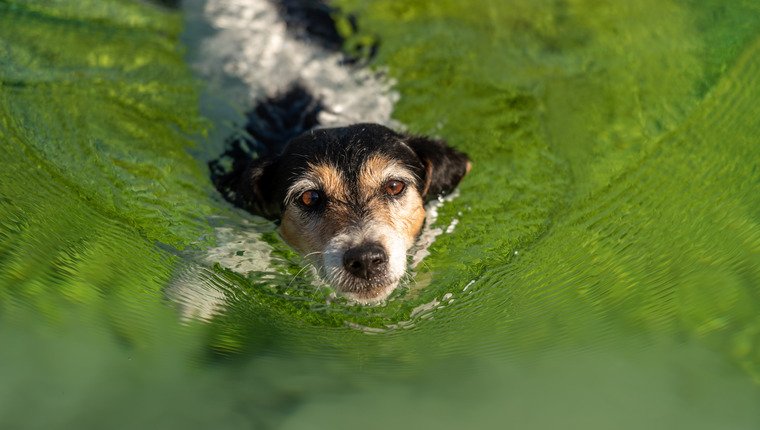- September 21, 2022
- No Comment
- 4 minutes read
Algae Blooms Pose a Growing Threat to Dog Health – DogTime

(Picture Credit: LineAndorsen / Getty Images)
An environmental watchdog group is warning dog parents that increased algae blooms pose a serious threat to their dog’s health.
Since 1993, the Environmental Working Group (EWG) has worked to identify “outdated legislation, harmful agricultural practices, and industry loopholes that pose a risk to our health and the health of our environment.” Part of their mission includes tracking news reports of toxic algae blooms. Starting in 2010, EWG has kept an interactive map of toxic algae bloom reports throughout the United States.
Advertisement
EWG’s report comes after a slew of recent stories about dogs dying from acute algae poisoning. Unfortunately, both humans and dogs suffer adverse health effects from being in or even near contaminated water sources. According to EWG, dogs are especially vulnerable to toxic algae because they’re more likely to swim and drink from contaminated bodies of water.
Surprisingly, EWG’s tracker shows that algae blooms have recently dropped from a high in 2019. However, instances of toxic algae blooms have generally increased since 2010.
The main culprit here is cyanobacteria—microscopic organisms that thrive in warm water. Over time, these bacteria proliferate enough to form visible ‘blooms’. With increased heat and rain from climate change, experts believe that the likelihood of algae blooms will continue to grow. EWG goes on to state that fertilizer runoff also plays a role in the number and size of blooms.
According to the CDC, the symptoms of cyanobacteria ingestion in humans range from sore throats and dermatitis to nausea, vomiting, and diarrhea. In the most severe cases, patients can develop pneumonia, liver failure, and cancer.
Thankfully, EWG provides dog parents with essential guidelines to help their dogs avoid contamination with these toxic bacteria. Specifically, the report advises avoiding any water with scum “like split-pea soup”, or significant blue or green stains on the surface. Additionally, EWG recommends watching local news outlets and recreation departments for reports of algae blooms in your immediate area.

